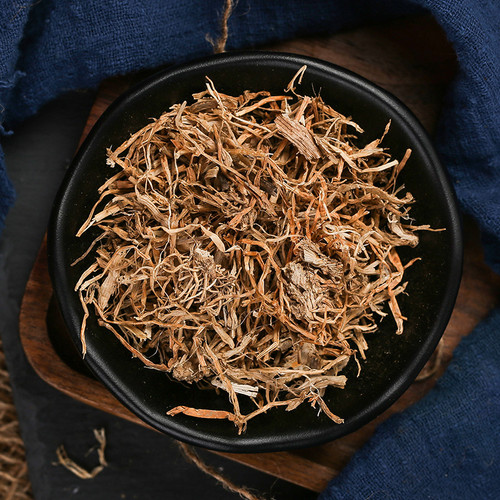Product Overview
Parts used: Dried root bark
TCM category: Herbs that clear Heat and dry Dampness
TCM nature: Cold
TCM taste(s): Bitter
Meridian affinity: Bladder Spleen Stomach
Scientific name: Dictamnus dasycarpus
Other names: Burning bush, Gas plant, Fraxinella
Use of dittany root bark (Bai Xian Pi) in TCM
Please note that you should never self-prescribe TCM ingredients. A TCM ingredient is almost never eaten on its own but as part of a formula containing several ingredients that act together. Please consult a professional TCM practitionner, they will be best able to guide you.
Preparation: Remove impurities, wash, moisten slightly, cut in thick slices and dry.
Dosage: 6 - 12 grams
Main actions according to TCM*: Expels Heat and toxicity especially when associated with Dampness. Expels Wind and Dampness.
Primary conditions or symptoms for which dittany root bark may be prescribed by TCM doctors*: Rashes Scabies Sores Carbuncles Eczema Rubella Ringworm Rheumatoid arthritis Jaundice
Contraindications*: This herb should not be used by those with conditions of Cold nor by those with Deficient Qi where there is Cold in the abdomen.
Common TCM formulas in which dittany root bark are used*:
For spirochete diseases such as syphilis and Lyme's disease combine dittany root bark with dandelions (Pu Gong Ying), smilax glabra roots (Tu Fu Ling), honeysuckle flowers (Jin Yin Hua), liquorice (Gan Cao) and purslane (Ma Chi Xian).
For fungal diseases associated with pruritis and itching combine dittany root bark with sophora roots (Ku Shen).
For Damp-Heat with skin lesions combine dittany root bark with smilax glabra roots (Tu Fu Ling).
Key TCM concepts behind dittany root bark (Bai Xian Pi)'s properties
In Traditional Chinese Medicine (TCM), dittany root bark are plants that belong to the 'Herbs that clear Heat and dry Dampness' category. Herbs in this category are used to clear inflammatory and infectious conditions, referred to as 'Internal Heat' in TCM. This is why most of the herbs in this category will have both antibacterial and antiviral properties. In TCM one has too much 'Heat' in their body as a result of a deficiency of 'Yin' (which is Cold in nature, see our explanation on Yin and Yang) or, more commonly, an excess of Yang (Hot in nature). Herbs that clear Heat and dry Dampness treat the latter while, at the same time, relieving the body of excess Dampness. As such they tend to be Cold or Neutral in nature.
As suggested by its category dittany root bark are plants that are Cold in nature. This means that dittany root bark typically help people who have too much "heat" in their body. Balance between Yin and Yang is a key health concept in TCM. Those who have too much heat in their body are said to either have a Yang excess (because Yang is Hot in nature) or a Yin deficiency (Yin is Cold in Nature). Depending on your condition dittany root bark can help restore a harmonious balance between Yin and Yang.
Dittany root bark also taste Bitter. The so-called "five elements" theory in Chinese Medicine states that the taste of TCM ingredients is a key determinant of their action in the body. Bitter ingredients like dittany root bark tend to have a cleansing action on the body by clearing heat, drying dampness and promoting elimination via urination or bowel movements.
The tastes of ingredients in TCM also determine what organs and meridians they target. As such dittany root bark are thought to target the Bladder, the Spleen and the Stomach. In TCM the impure water collected by the Kidneys that cannot be used by the body is sent to the Bladder for storage and excretion as urine. The Spleen on the other hand assists with digestion, blood coagulation and fluid metabolism in the body. The Stomach is responsible for receiving and ripening ingested food and fluids. It is also tasked with descending the digested elements downwards to the Small Intestine.








